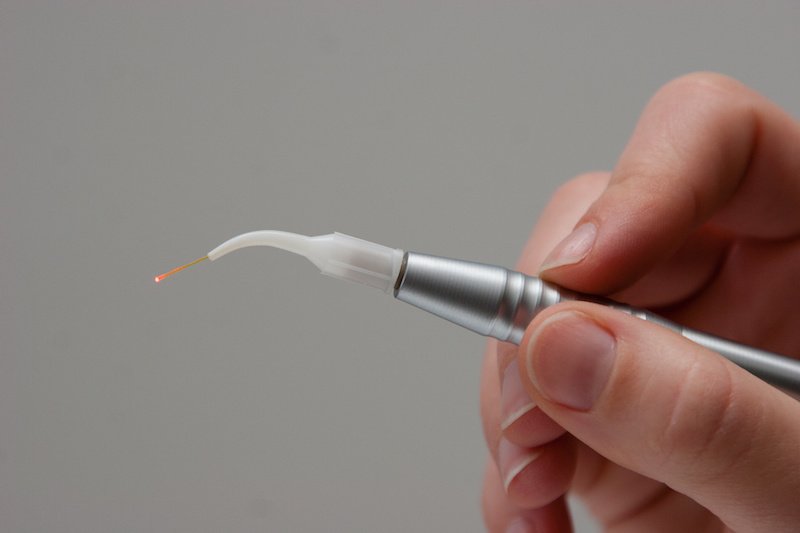Dental decay is one of the most common oral problems affecting children across the globe. Untreated decay can lead to premature loss of primary teeth which in turn can affect the appearance, speech, and chewing function in children.
Pulpotomy is one of the techniques for treating dental decay in children. It is performed in cases when the decay is confined within the crown of the tooth (part of the tooth seen above the gums) and has not progressed to the roots.
Formocresol, a mixture of formaldehyde and tricresol, has been used for pulpotomy for over six decades now. The wide acceptance of formocresol owes to factors like ease of use and excellent bactericidal properties.
Low-level laser therapy or LLLT is known for its anti-inflammatory and pain-relieving actions. Studies suggest that LLLT can also improve immunity.
This study aims at analyzing how successful and effective is LLLT when used for pulpotomy in comparison with formocresol, the “gold standard pulp dressing material”.
Specifics About the Study
This study is a split-mouth, randomized clinical trial and has been conducted in the Pediatric Dentistry Clinics of King Abdulaziz University, Jeddah, Saudi Arabia and extends between August 1, 2016, to August 31, 2017.
Children selected for the study were in between five to eight years of age and the selection criterion was to have deep decay (that needs to undergo pulpotomy) on at least one deciduous molar on each of the sides.
The criteria for selecting the teeth for the study were-
- Teeth should have decay in the crown portion that can be restored.
- There should be no swelling, mobility, and spontaneous pain
- There should be no evidence of infection in the root-tip area when examined through Xrays.
Even though 50 children were screened, only 36 of them could meet the above-mentioned criteria.
Overall, 106 teeth were found eligible to undergo pulpotomy. Hence, 53 teeth each were assigned to the LLLT group and FC group.
Pulpotomy Procedure
For the pulpotomy procedure, an anesthetic gel was rubbed on the gums of the affected tooth and then a shot of local anesthesia was given.
After isolating the tooth with a rubber dam and a suitable clamp, the decayed part of the tooth was eliminated.
The pulp is the tissue that is present in the innermost part of the tooth and it resides in the pulp chamber. The pulp consists of blood vessels and nerve fibers that keep the tooth alive.
A pulpotomy involves the removal of the pulp inside the crown, a sharp instrument called a spoon excavator was used to scoop it out. To stop bleeding that occurs thereafter, the pulp chamber was flushed with distilled water and a cotton roll dipped in normal saline was placed in the pulp chamber for around five minutes.
1. The Low-Level Laser Therapy (LLLT) Group
The teeth classified for the LLLT group were exposed to laser radiation of 810nm wavelength for 40 seconds through an optical fiber of 200µm, the tip kept at around 2mm away from the pulp.
To ensure that all the parts within the pulp chamber were exposed, the tip was moved all around the pulp chamber.
2. The Formocresol (FC) group
In the case of the teeth falling under the FC group, a small cotton ball was dabbed with formocresol of 1:5 dilution and placed inside the pulp chamber for around five minutes.
The next step was the filling of the pulp chamber with a temporary filling material called reinforced zinc oxide-eugenol which was finally replaced, in the next appointment, with a permanent filling material called glass ionomer cement followed by the placement of a stainless steel crown.
The children were recalled for a follow-up after 6 months and one year of the procedure. During the clinical examination, there was no sign of sensitivity, mobility, toothache, or swelling whereas in radiographic assessment no abnormalities such as infection at the root tip were detected.
Hence, the study could indicate that pulpotomy was successful in both the groups, and both formocresol dressing as well as low-level laser therapy delivered the same result.
Discussion
LLLT can cause a boost in the calcification process on the wound surface. That is why this therapy can offer several benefits when used for pulpotomy like-
- It is minimally invasive
- It is a quick procedure so it consumes less chairside time.
- It has the property of promoting regeneration of dental tissues.
- It can lower hypersensitivity
- It can reduce or eliminate pain due to dental treatment procedures.
Though formocresol, when used as a pulpotomy material, also causes devitalization of the pulp, it may promote an unfavorable reaction in the pulp present in the roots. This can result in the death of root pulp and inflammation. Moreover, formocresol is carcinogenic (can cause cancer) and hence, it is used in 1:5 dilution.
With that being said, more scientific research is needed to confirm the benefits of LLLT over FC, and studies with a larger sample size and longer follow-up durations are required to validate LLLT as a routine pedodontic procedure.
A Final Note
A pulpotomy is a treatment of choice for saving primary molars with decay affecting only the coronal part of the pulp tissue.
Formocresol has been the preferred material for pulpotomy over the past several decades.
This study was performed to evaluate the effectiveness of LLLT for pulpotomy and compare the results with those achieved through formocresol.
The rate of success was similar in the teeth treated with LLLT and FC. Moreover, LLLT has shown additional benefits of being quick and less invasive.
More research may be needed to consider LLLT as a part of routine pulpotomy.
Mark


